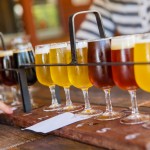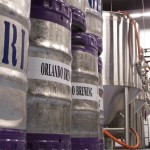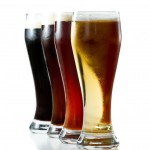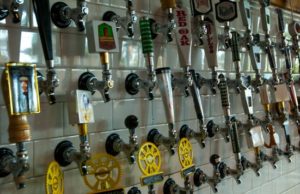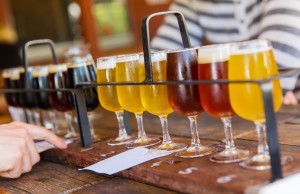Holistic Beer and Aluminum Bottles: How One Brewery is Changing the Face of Beer
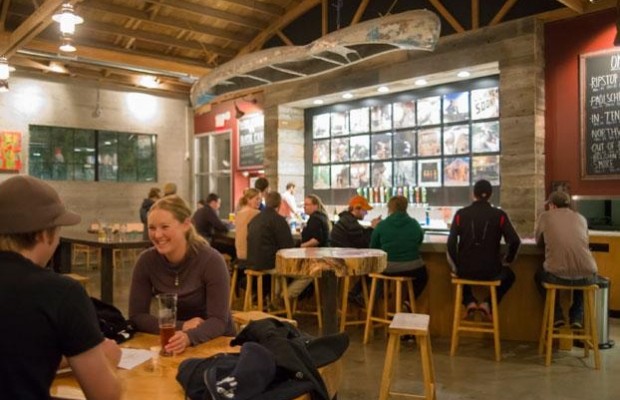
Holistic brewing is a new movement that’s rapidly gaining traction among beer enthusiasts. While green brewing focuses on using organic ingredients and being kind to the Earth, holistic brewing takes things one step further by trying to make a positive impact on the local community.
We talked to Joseph Dallas, Marketing Director and Co-founder of Base Camp Brewing Company to find out what holistic brewing means and how they’re leading by example.
QUESTION: You refer to your company as one “with a holistic approach to production, packaging, environmental awareness.” Can you tell our readers a bit about your green approach to brewing and what are you doing to ensure low environmental impact?
JD: We do a lot of little things to further this goal; it’s our hope that they add up to a real positive difference for ourselves, our community, and our planet. An example for each would be:
– For production, we partner up with local farmers to make use of all our spent grain. This is several hundred kilograms of cereal grain for each brew, still very high in nutritive and caloric value, that many breweries, unfortunately, have to just throw out. Here at BCBC, all our spent grain ends up as feed for local livestock.
– For packaging, we deliberately and carefully decide our overall packaging strategy. In terms of physical packaging, we often don’t follow the larger trends in craft beer; we’ve found that some of the decisions other craft breweries are making may be based on faulty info. For example, the carrier we use for our six-packs of 12oz cans is the more traditional plastic rings. The stigma of this type of carrier, a hold-over from when manufacturers were following irresponsible production methods, keeps many craft breweries from using it. We do, though, because current plastic rings are photodegradable, made of recycled material, and use less material to make (this last point, if I might generalize, being the most important factor in any product’s degree of environmental impact).
– For environmental awareness, let’s go to the brewhouse. We use steam, instead of the very common direct-fire system, for heating our brew kettle. In direct-fire systems, a large gas burner situated under the kettle provides the heat you need for boiling the wort, like a pot on a stove. With our system, we drive super-heated steam through jackets built into the sides of the kettle.
This allows us several benefits in regards to the actual brewing process but is also the most eco-friendly way to brew beer. Each of our (currently) 25 hL batches requires a tremendous infusion of heat energy to bring it up to temp and maintain a boil for ninety minutes. Then, at the end of the boil and before introducing yeast into the wort, we chill it as quickly as possible via a heat exchanger– cold water in one side, hot wort in the other; they pass by each other through a big maze of flattened tubes so the heat from wort can transfer to the water; end result, hot water, and cold wort ready for the fermenter. In a direct-fire system, all the heat energy invested in the boil gets transferred to your cooling water and down the drain. With our steam system, though, we capture all that water and send it back to our steam boiler, conserving that energy for another brew. It’s awesome.
QUESTION: You offer beer in a unique way: in aluminum bottles. Can you tell us why you chose to go this route and what are the benefits?
JD: A lightfast container is a better choice for beer than one that allows some light through it. UV rays are the big culprit here — they’ll zip right through a glass, no matter the color, and contribute to an accelerated degradation of your beer. Since we want to ensure a long, stable shelf life for our beer and do everything we can to make sure it stays fresh, glass just isn’t an option. We recently began canning, which is a huge step for us, and love that cans protect our beer so well.
However, we don’t kid ourselves that cans have some shortcomings; namely, the form factor of a can limits how close to perfect we can get on our packaging line. A tiny bit of oxygen ingress during the packaging process creates degradation in the beer that can become noticeable 6+ months down the road. With our bottles, though, we are able to use a packaging process that minimizes the amount of oxygen getting into our beer. They’re lightfast, they limit premature aging problems, they’re infinitely recyclable, they use less material, they’re cheaper and use less energy to move around and store, they’re adventure-friendly, and they look bad-ass. We love our aluminum bottles!
QUESTION: You have some very special beers on offering, including one that you describe as having “mimosa-like character.” How do you decide what recipes to pursue and what ingredients you want to try?
JD: We really know and love old world beer, along with American craft. It’s a lot of fun to use traditional brewing styles as a way to navigate all the possibilities, all the different courses we could follow to create a beer that’s uniquely ours. I feel we are at our very best when we develop a new beer that is entirely new, yet still familiar. Our In-Tents India Pale Lager might be a great example of this. Anyone that’s looking for a malty, hoppy big beer like an IPA or red will dig it. Super clean, super drinkable, but it’s got a ton going on. We were looking at early English IPAs in developing this recipe, so we used a lot of great specialty malts to round out the body of this beer, and then lagered it on red and white oak that we chip and toast in-house to recall the barrel and wood characters that a real IPA would have developed during its time in cooperage.
And then we dry-hop the shit out of it. Oregon-grown Fuggle, Centennial, Nugget, and Mt. Hood hops go into the lager tank, where we take advantage of the longer, cool conditioning time to eke out even the most fragile, volatile flavor and aroma flavors from these great locally-grown hops. The result is a lager beer that’s unique and new, yet still showcases touchstones from brewing tradition.
QUESTION: Anything else you’re doing that makes your brewery different to others out there?
JD: We do lagers. We source all Oregon-grown flavor and aroma hops. We put a ton of work into what we do and are proud of the result. I always love to share what we do here, and I’m so very truly stoked to be a part of American craft brewing.



